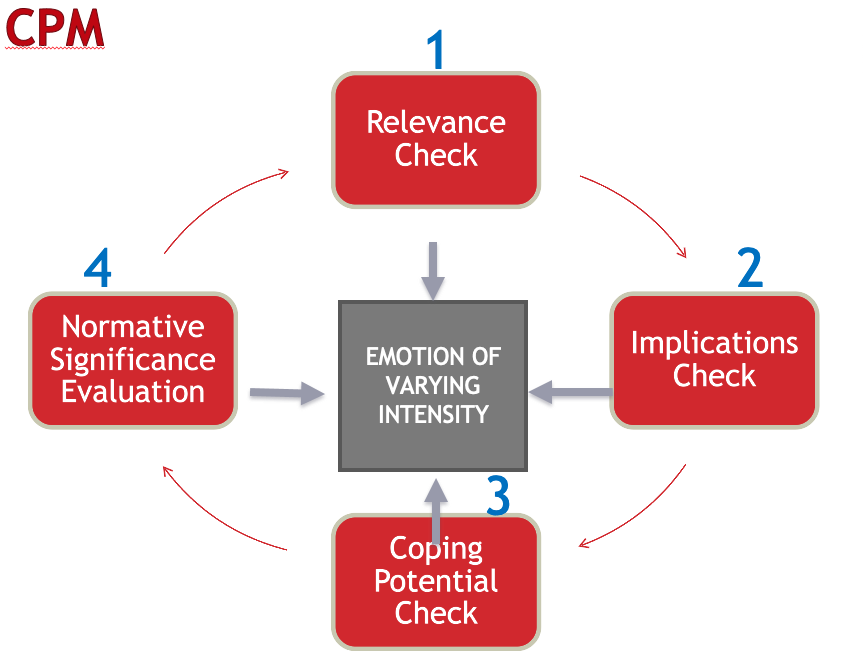Chapter 4: Cognitive Appraisal Theory
Normative Significance Evaluation
The final appraisal check is called normative significance evaluation (Figure 6). During this check, people compare the eliciting event and their behavior changes against their values, social norms, morals, and cultural standards. During these appraisals, people consider how their behaviors and the outcome of the event will be viewed by other people and how the outcome and their behaviors will influence their self-esteem. This last group of appraisals applies only to animals who engage in complex thought – so humans!
Two checks occur during this last step. The first is the internal standards check. During the internal standards check, people evaluate the eliciting event and their own behavior against their own internal standards (self-concept, morals, values, rules, etc.). This evaluation against our own internal standards could increase or decrease our self-esteem. For example, if we lie to a friend, we will evaluate this behavior as violating our self-concept (we don’t view the self as dishonest) and internal morals, thus temporarily dropping our self-esteem. If we help a stranger, we will evaluate this behavior as highly moral and part of our self-concept (we are good people!), thus temporarily increasing our self-esteem.
The second check is the external standards check. During this check we evaluate the event and our own behavior against standards or pressures from the external environment or a certain reference group. These external codes include perceived social norms, social rules, and group moral codes. In the external standards check, the reference group we consider when comparing our behavior to group norms could change the emotion. For instance, an adolescent teenager’s behavior would be viewed differently by a group of friends and by parents. If a teenager tries a cigarette for the first time, this might match the group norms for the friends, but not the parents. Thus, when a teenager tries a cigarette for the first time their emotion could change based on whether they compare their behavior to their friend reference group (pride!) or to their parent reference group (shame!).
Figure 6
Normative Significance Evaluation SECs

Figure 7
Component Process Model (CPM) Appraisal Checks

Long Description
This image is a circular flowchart labeled “CPM” (likely referring to the Component Process Model of emotion). At the center is a gray box labeled:
“Emotion of varying intensity”
Surrounding it are four red boxes, connected in a clockwise loop with arrows, each representing a stage in the appraisal process:
Relevance Check – Determines whether the event is significant to the individual.
Implications Check – Assesses the consequences or meaning of the event.
Coping Potential Check – Evaluates the individual’s ability to manage or respond to the event.
Normative Significance Evaluation – Considers whether the event aligns with social or personal norms.
The flowchart illustrates how these four appraisal checks interact to shape the intensity and nature of emotional experience.

